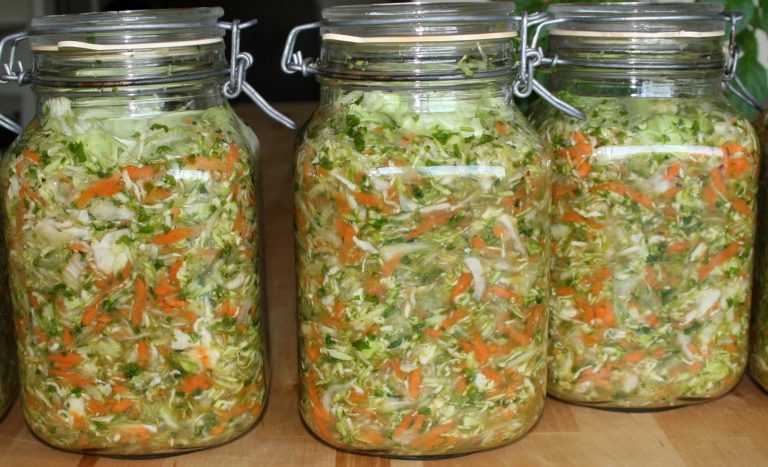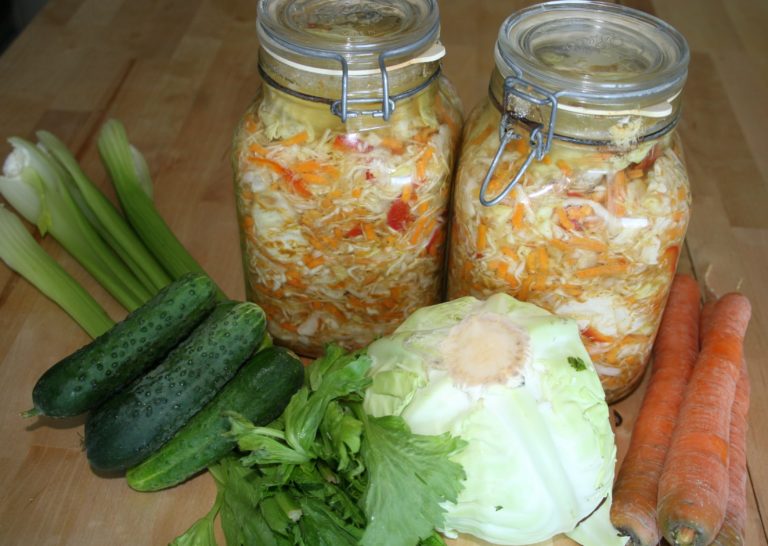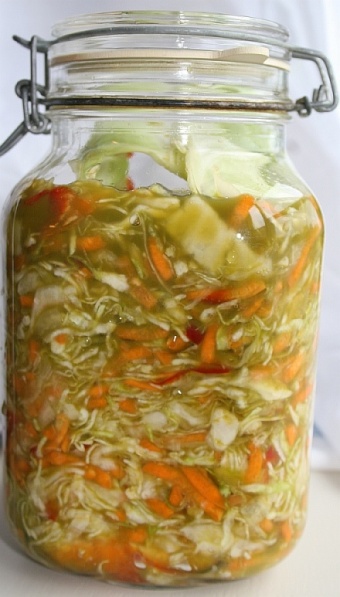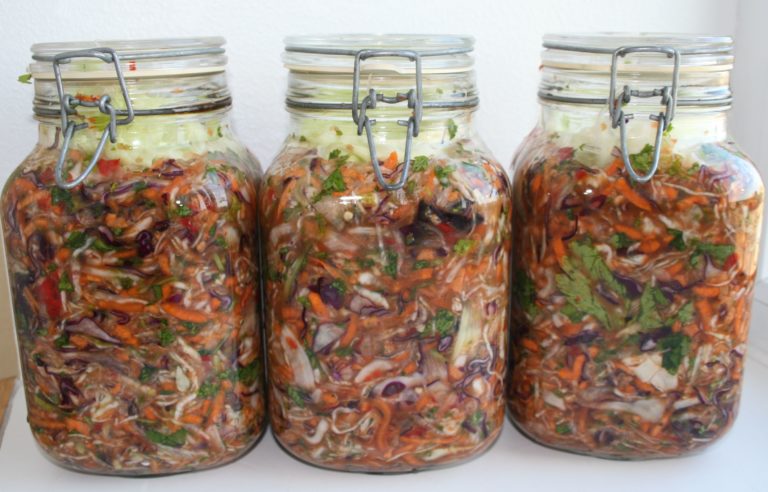Fermenting Vegetables In a Warm Climate | 7 Tips To Succeed
Fermenting vegetables in a warm climate can be a challenge. Common problems include mould and mushy veggies. It is possible to prepare great fermented vegetables in a warm climate. Here are some factors to consider.
Temperature
A good temperature range for fermenting vegetables is around 68 to 72 (20 to 22 C). A few degrees more or less is probably okay. However, the higher the temperature the more challenging it becomes. Around 80 degrees (27 C), problems are hard to avoid.
What kind of problems?
- Mould or other unwanted microorganisms
- Soft and mushy vegetables
- Dark coloured veggies
The warmer it is the faster it ferments.
Fermenting vegetables in a warm climate speeds up the fermentation process. At an ideal temperature, fermentation is completed in around 7 days. But when it’s warmer maybe 3-5 days would be enough before you need to refrigerate.
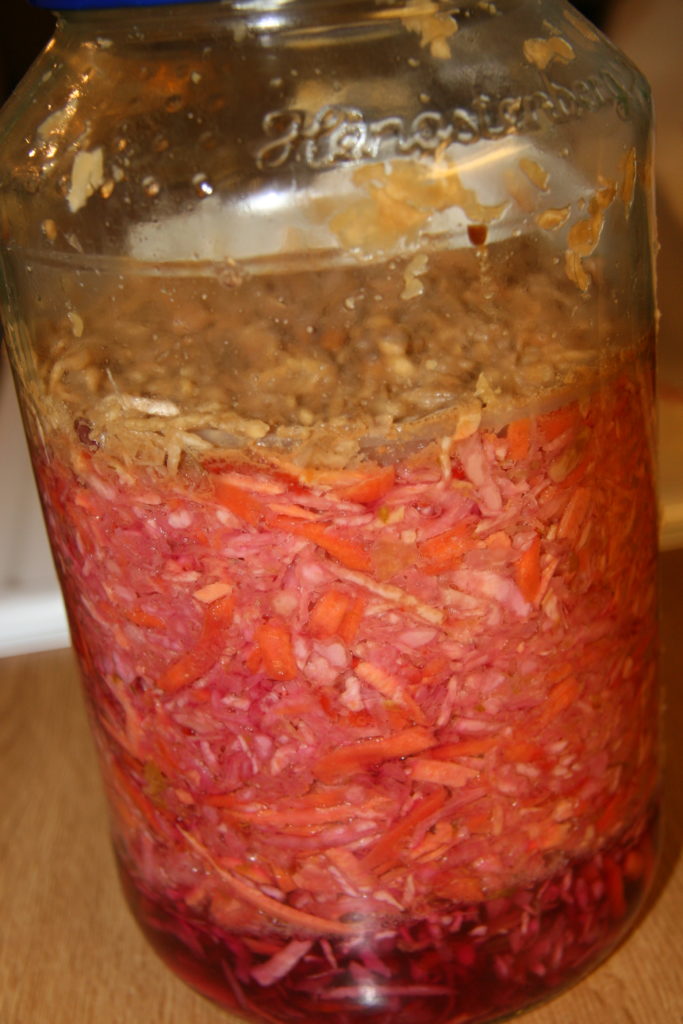
7 tips to succeed
Be extra careful. One time, we prepared a new batch of fermented vegetables when the weather suddenly turned very warm. We left the jars to ferment for too long so the veggies turned soft and mushy.
When the room temperature rises above 77 (25 C), the risk of problems increases dramatically. But if you can get through the first couples of days of the fermentation, then the vegetables will not be as sensitive. This is because of the increasing acidity that protects the veggies from bad microorganisms.
How can you keep the veggies cool during fermentation?
1. Use your air condition unit
This is a simple way to keep the right temperature, especially during the sensitive first few days of fermentation. After this, the acidity level will raise and protect the veggies.
2. Use a starter culture

Highly recommended! This makes fermentation more stable and introduces bacteria that protect the vegetables. A starter culture also lowers the pH (makes it more acidic) faster, thereby protecting the veggies from mould.
3. Add more salt
Traditionally, much salt was used when making sauerkraut. A simple reason is that there were no fridges and salt preserved the veggies for a long time. So increasing the amount of salt is effective. However, it’s a delicate balance. You don’t want too much salt since it might prevent the growth of beneficial microorganisms. How much should you use? Normally, 2-3 tablespoons per quart veggies should be enough.
4. Use fresh celery juice as brine
Celery juice helps protect the vegetables from a main enemy – mould. If you have a juicer, then juice celery stalks and mix the juice with the starter culture . This way you have a great, protective brine for the veggies to ferment in. The fermented veggies will not taste celery as the fermentation process transforms the taste completely.
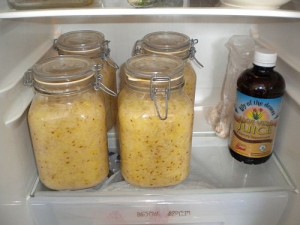
5. Fermenting in a fridge
Some have tried to ferment vegetables in a fridge that is set on cool, not cold. This might work quite well even if the temperature is cooler than ideal.
However, the low temperature will slow down fermentation so that you might need need 15 days or more until fermentation is complete. Taste the veggies to see when they are ready.
6. Cool down with water
Some have tried putting the jars to ferment in cool water. They even put re-freezable ice packs around the jars to keep them cool during the first 2-3 days. Clever!
7. Oxygen is bad
Oxygen is a main enemy of fermented vegetables as it promotes the growth of unwanted microorganisms. Therefore, make sure that the brine is completely covering the vegetables to block oxygen out. If you use a water lock, then make sure it’s always tight and will not let any air in. If you use mason jars, don’t screw the lid on too tight during the first few days since pressure will build in the jars and the gas needs to escape. You can also open the lid for a second every now and then to let pressure out.
Fermenting in a warm climate is doable
If you are careful with hygiene, use a starter culture, and follow the principles outlined here you can succeed in preparing delicious fermented vegetables in a warm climate.

